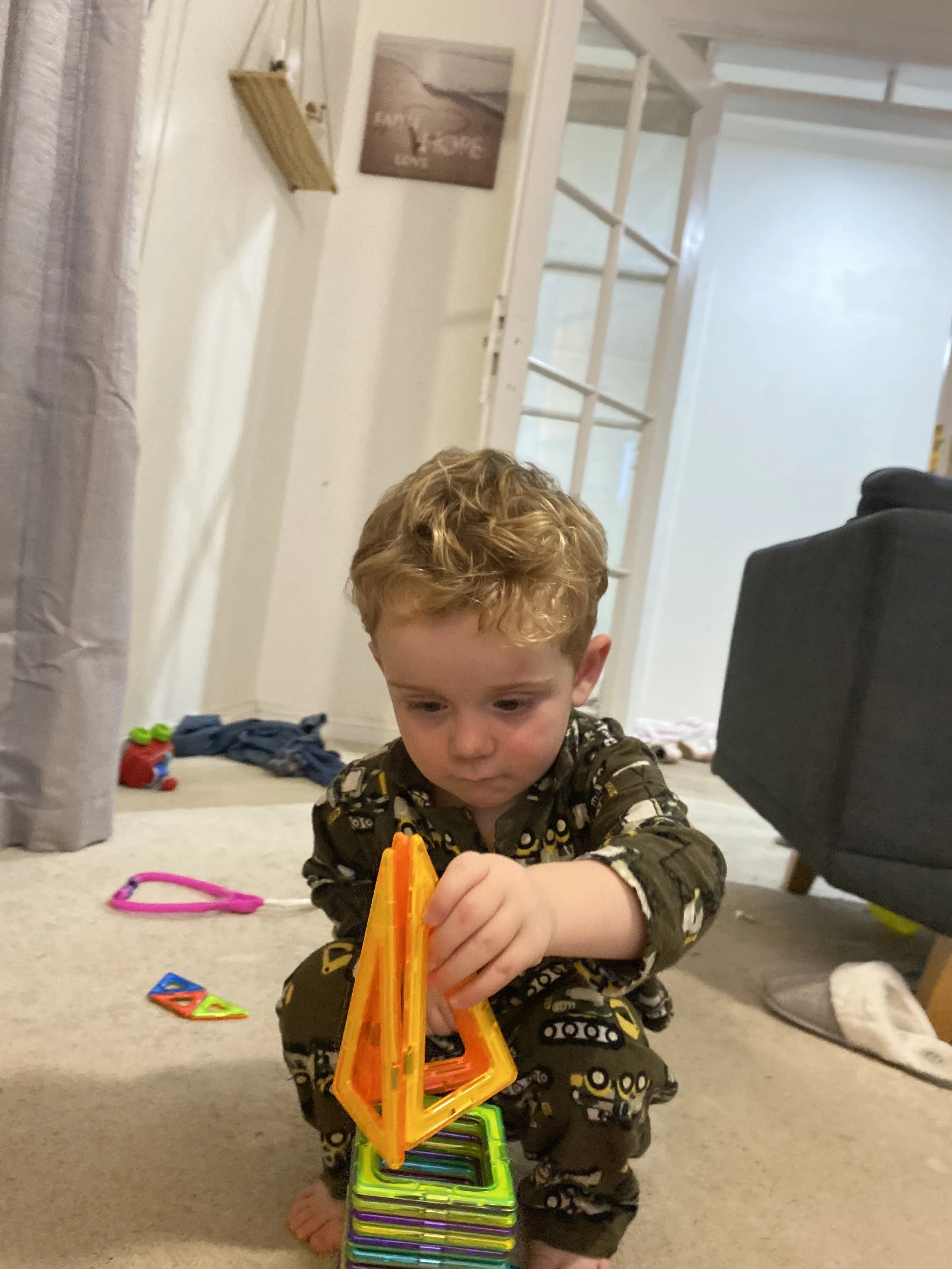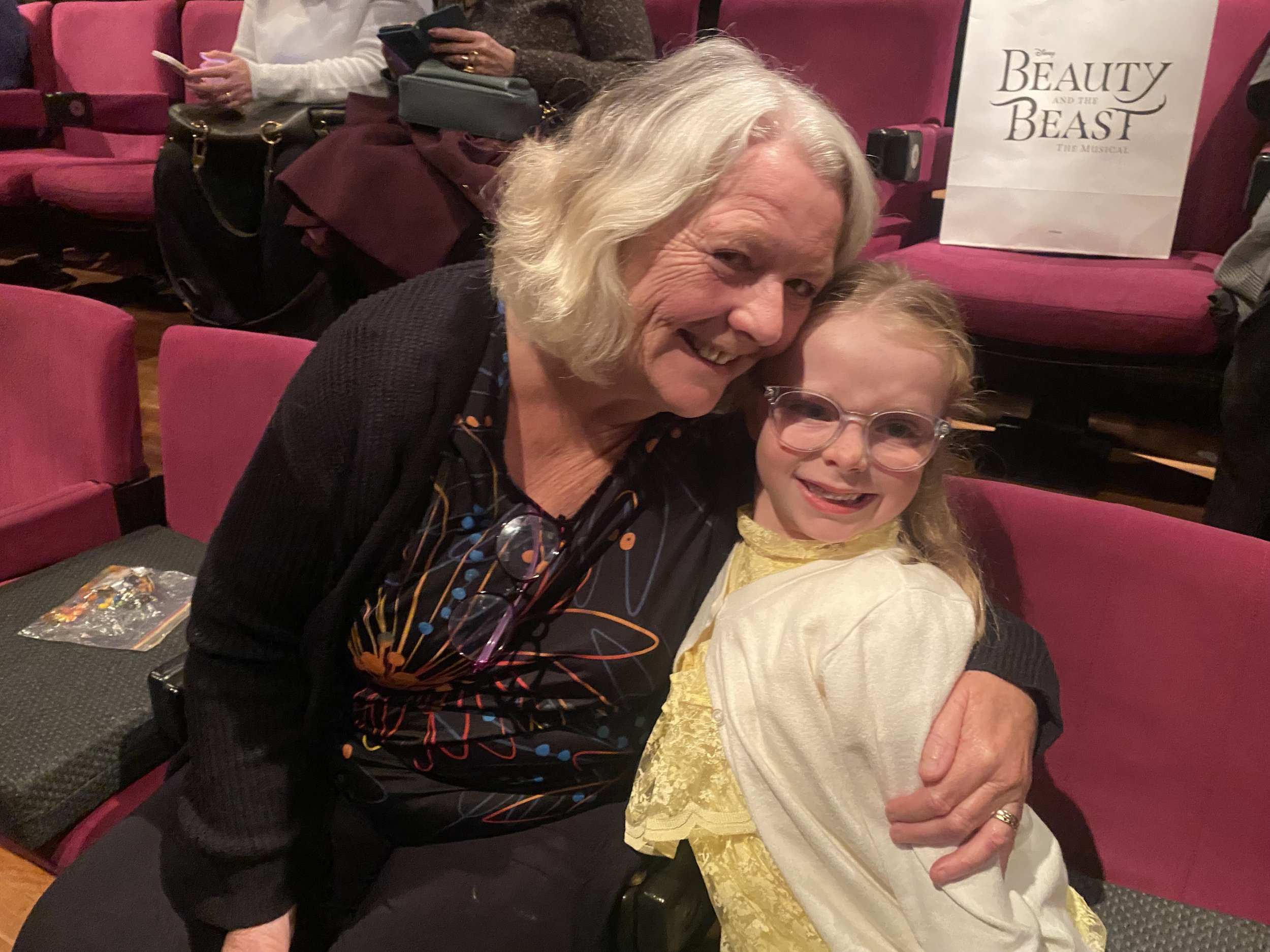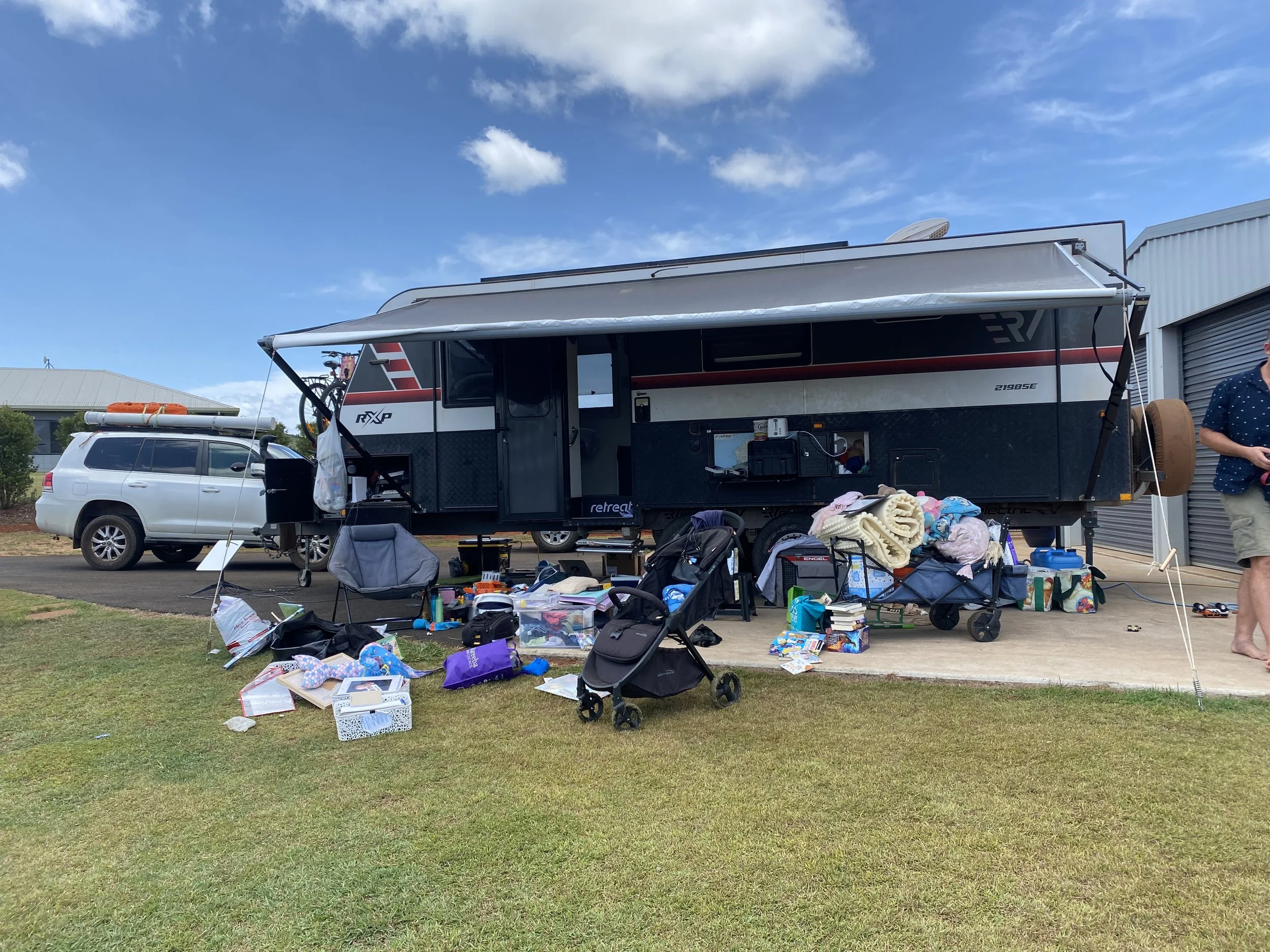Why Less “Stuff” Can Help You Become a Stay-at-Home Mum
If you're dreaming of becoming a stay-at-home mum, chances are your heart is already in the right place.
You value time. You crave connection. You want to be there—really be there—for your kids. And more than likely, those are the same values you hope to pass on as they grow: presence over pressure, simplicity over chaos, and love over stuff.
But here’s the catch: the world around us doesn’t always make that easy.
The Pressure to Give More (and Spend More)
We’re constantly bombarded with messages that our kids need more—more toys, more clothes, more activities, more gadgets. Somewhere along the way, the idea took hold that a well-loved child is one with a bedroom overflowing with “stuff.”
And honestly? It’s no wonder so many of us start measuring love and success in shopping trips, toy hauls, and colourful packages.
Sure, a new toy can light up their face—for a moment. But those moments are fleeting.
Before you know it, the clutter creeps in. The cupboards get crowded. The floor becomes a minefield.
And behind it all? Stress. Mental. Emotional. Financial.
Because clutter isn’t just about space.
It’s also about money.
All those little purchases add up so fast. A few dollars here, an impulse buy there, a “just because” gift after a long day... and suddenly, you’ve spent way more than you intended—and your home feels no better for it.
And if you’re working toward staying at home full-time?
Those small financial leaks really matter.
They can quietly sabotage the bigger dream you're working so hard to reach.
Here’s the Beautiful Truth: You Can Choose a Different Way
Even if your love language has always been gift-giving...
Even if your kids are used to being surrounded by treats and surprises...
It’s never too late to shift gears.
And no—you don’t need to go cold turkey or throw everything out overnight (please don’t do that).
Like any lasting change, it starts small.
Gentle. Thoughtful. Sustainable.
And most importantly—budget-friendly.
Simple Ways to Declutter Your Space and Your Spending
1. Start with One Category
Choose something small and manageable to begin with—like soft toys, books, or clothing. Go through the items with your child if they’re old enough and emotionally ready to help. (Some of mine weren’t—and that’s okay! One of my kids struggled to part with toys they didn’t even play with. The emotional attachment was real.)
The goal isn’t to force separation, but to begin building awareness. Talk about what’s truly loved or regularly used, and gently let go of the rest.
You might be surprised by how little they actually need—or even notice is gone.
Ari, from a young age, was able to focus on activites for a decent stretch of time. These magnetic tiles are a great toy that we chose to take with us in the caravan. They were used numerous time and were often rotated with the lego.
2. Rotate Toys Instead of Adding More
Create a toy library at home. Rotate a few items in and out each week.
Not only do kids play more deeply with fewer choices, but you also avoid the constant urge to buy “just one more thing.”
My father-in-law recently said to me, “Your kids can sit and play with one toy for ages.”
And he’s right.
They’ve learned to go deep in their play because they’re not overwhelmed by too many options.
3. Choose Experiences Over Things
In true Not-So-Stay-At-Home Mum style, I’m rarely at home.
Back when we lived in a house, I was always out with the kids—parks, libraries, playgrounds, museums, soaking up life together. Now that we travel full-time, that hasn’t changed.
We still value experiences above anything else.
A backyard picnic, baking cookies, a walk in the park, a family dance party—free or low-cost moments that fill their hearts and make the most beautiful memories. All without draining your bank account.
4. Have Honest, Gentle Conversations
Talk to your kids about the changes you’re making. Keep it simple and age-appropriate. Show them that happiness doesn’t come from having more things, but from being together and feeling connected.
Practice what you preach, too. Let them see you buying less—for yourself, your home, even your always-cluttered corner cupboard.
I often talk out loud in the shops, walking them through my decision-making:
“Where would we put this?”
“Would we really use it?”
“Don’t we already have something similar?”
You’re modelling contentment, gratitude, and healthy money habits—just by living them out loud.
5. Set Boundaries Around New Stuff
My mum and Maddie, having a photo together, before the Beauty and the Beast Performance
Before birthdays or holidays, gently guide friends and family to give experiences or contribute to something meaningful.
One year, Hannah went to TreeClimb with her Nanna and a friend. That outing left a lasting impression. Three years later, she’s still talking about it.
Another time, my mum treated the kids to a theatre performance of Beauty and the Beast instead of buying toys. It was a collective birthday gift—and they absolutely loved it.
A zoo pass, museum membership, or special outing will always go further than a toy that ends up at the bottom of the toy box.
6. Make Purchases With Purpose
When we made the decision to move into a caravan, something shifted.
Suddenly, every purchase came with a question:
Will this come with us?
If not, why are we buying it?
Does it support our goal of full-time travel and intentional living?
Some days were easier than others. There were things I thought I needed—until I realised they weren’t actually adding value, just taking up space.
And then came that day.
The day we had to face every single item we owned.
Let me tell you—nothing changes your perspective like the reality of fitting your entire life into a few cupboards and tubs.
Maybe you won’t ever pack up for caravan life (or maybe you will!). But maybe…
you can set your own version of “that day.”
A declutter day. A reset weekend. A spring clean with intention.
Even just imagining that moment—asking yourself, “Would I keep this if I had to move tomorrow?”—can bring surprising clarity.
We bought less. We decluttered more.
And we got real about what was serving our family—and what wasn’t.
This Was the First Step Toward the Life We Now Love
Don’t be fooled—decluttering still happens in caravan life.
Stuff creeps in no matter where you live. This was our big pre-Christmas clean-up (November 2024), and yep—it got messy.
It’s not about being perfect, just pausing to reset when life piles up.
For our family, choosing less was the start of something more.
It didn’t happen overnight.
It was a process.
A slow one.
But it was the foundation that allowed us to live a life we never thought possible—one filled with travel, freedom, deep connection, and precious time with our kids.
And let me say it again:
It doesn’t happen all at once.
It happens with small, consistent steps.
Just like most things in life.
You’ve Got Nothing to Lose—and Everything to Gain
Even if you’re not about to pack up your home and live in a caravan, this still applies.
If your house feels overwhelming...
If you find yourself going to work just to escape the mess...
If your heart longs to be home with your kids, but the budget feels too tight to make it work...
Then it might be time to make some changes.
Start small.
Talk to your family. Let them know how you’re feeling.
It’s not just one person’s responsibility—it takes teamwork to make the dream work, as they say.
Ask for support—it’s not failure. It’s self-care.
Because when you look after yourself, you’re also looking after them.
It’s choosing connection over burnout.
Simplicity over stress.
Intentionality over overwhelm.
If This Is You… Just Start
If evenings feel like a blur of rushing and reactivity… start with one drawer.
One toy basket.
One spending habit.
Let your family be part of the process.
Celebrate the small wins.
And remind yourself often:
You don’t need more stuff to give your kids the best life.
You need more you.



